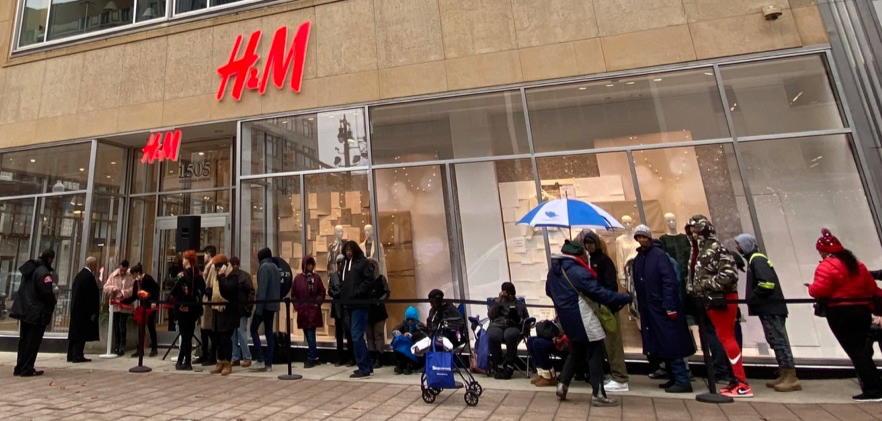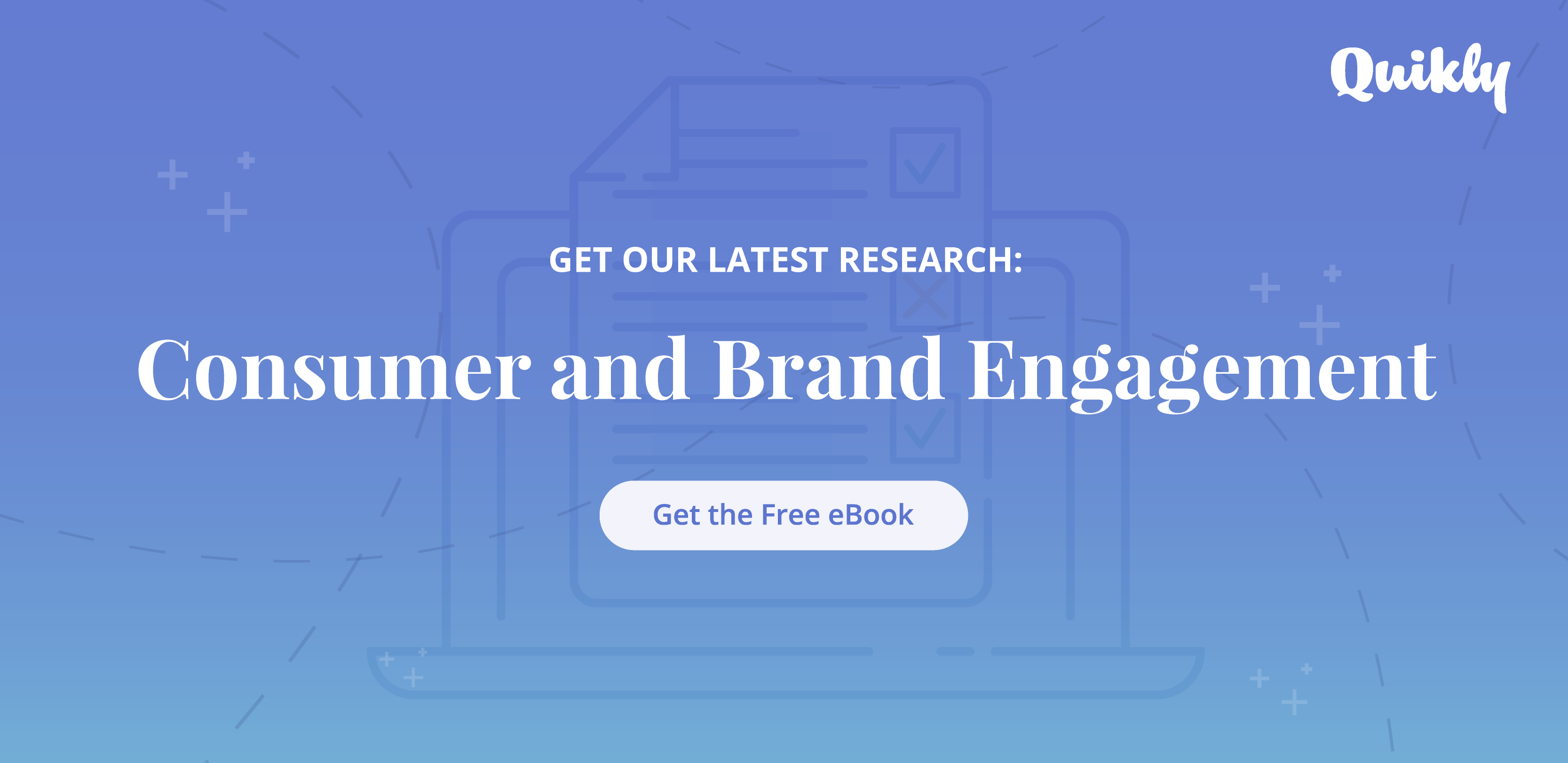
Why H&M's Detroit grand opening worked

On Thursday, November 21, H&M held a grand opening event for its new location in Detroit on Woodward Avenue. The event drew hundreds of people. Of course some of the draw came from an excited city gathering around a brand they love — but we also noticed key psychology tactics in H&M’s marketing strategy that made the day such a success for the company.
Let’s dive into a few of them:
Tactic 1: Anticipation
How: H&M built up anticipation for the event in a few ways:
- Publicly announcing in March that the store would be coming to Detroit.
- Hanging giant H&M signage in the windows
- Posting on social media about the chance to win up to $500 at its grand opening for the first 500 people waiting in line
Why It Worked: Waiting for something — like a clothing store to open — for a few months, or standing in line for a few hours, can lead to feelings of joy, according to a 2007 study by the American Psychological Association.
“Our research suggests that the enjoyment people glean from anticipation might also be an important component of life satisfaction: One’s satisfaction with life is influenced both by looking backward and by looking forward,” wrote professors and psychologists Leaf Van Boven and Laurence Ashworth.
Not only does the end product of meeting an anticipatory event or item elicit satisfaction, but the act of waiting itself stimulates arousal in the brain, according to research from psychologist Thomas Gilovich.
People feel delighted waiting for an event, finally experiencing it and the satisfaction that follows. H&M not only made it known they were coming to Detroit. But they also made the opening event an additional waiting game. This made for happy and satisfied customers.
Tactic 2: Scarcity
How: Only the first 500 people in line for the grand opening would receive a scratch-off card with a mystery value up to $500 for H&M merchandise.
Why It Worked: The perception of scarcity has a powerful effect on a person’s behavior, according to consumer psychologist Dante Pirouz. Researchers believe it’s an adaptive trait from the earliest days of mankind when a human’s survival depended on their ability to perceive when vital things like food and water became scarce.
Today, people process scarcity similarly. Pirouz explained that when people perceive something as rare they become hyper focused on it. That’s because heightened cognitive processing kicks in, which often elicits anxiety when forecasting the future absence of said rarity.
So if only the first 500 people had the chance to win up to $500 to spend at H&M, it would be an opportunity the 501st person in line wouldn’t want to miss. It also makes a better case to come on Day One rather than Day Two.
Tactic 3: Curiosity
How: Each person standing in line would received an undisclosed amount of money on H&M’s "Access to Fashion Pass."
Why It Worked: Psychologist George Loewenstein described curiosity as “a cognitive induced deprivation that arises from the perception of a gap in knowledge and understanding” in a study published in 1994.
“Lowenstein’s information gap theory holds that curiosity functions like other drive states, such as hunger, which motivates eating. Building on this theory, Loewenstein suggests that a small amount of information serves as a priming dose, which greatly increases curiosity. Consumption of information is rewarding but, eventually, when enough information is consumed, satiation occurs and information serves to reduce further curiosity,” according to an article on the National Institutes of Health’s website.
Simply put, Detroiters waiting for H&M to open wanted to know if they were to stand in line, how much money they would receive. After learning how much money was awarded on the scratch-off, they would become satisfied. Their curiosity was met.
Tactic 4: Competition
How: Because marketers at H&M used psychological tactics like anticipation, scarcity and curiosity, a competitive environment was created.
Why It Worked: Consumption became a form of competition, so the need to be one of the first in the store and/or win $500 elicited an emotional response in people. This can be seen as a form of social capital.
And, according to Pirouz, being a person with social capital can be beneficial; therefore, people naturally compete for it in the arena of purchases.
All of this can be linked back to how individuals see themselves and their desire to signal that they were one of the first inside the new H&M and received some free money.
These psychological tactics in H&M’s marketing strategy fed into people’s innate desires, culminating in a crowd down Woodward and Clifford. To see a video of that crowd, and learn more about H&M's Detroit opening, visit this blog.

Andrea Gonzales-Paul is a brand journalist at Quikly. Her background is in storytelling, specifically working in TV news and documentary filmmaking.

